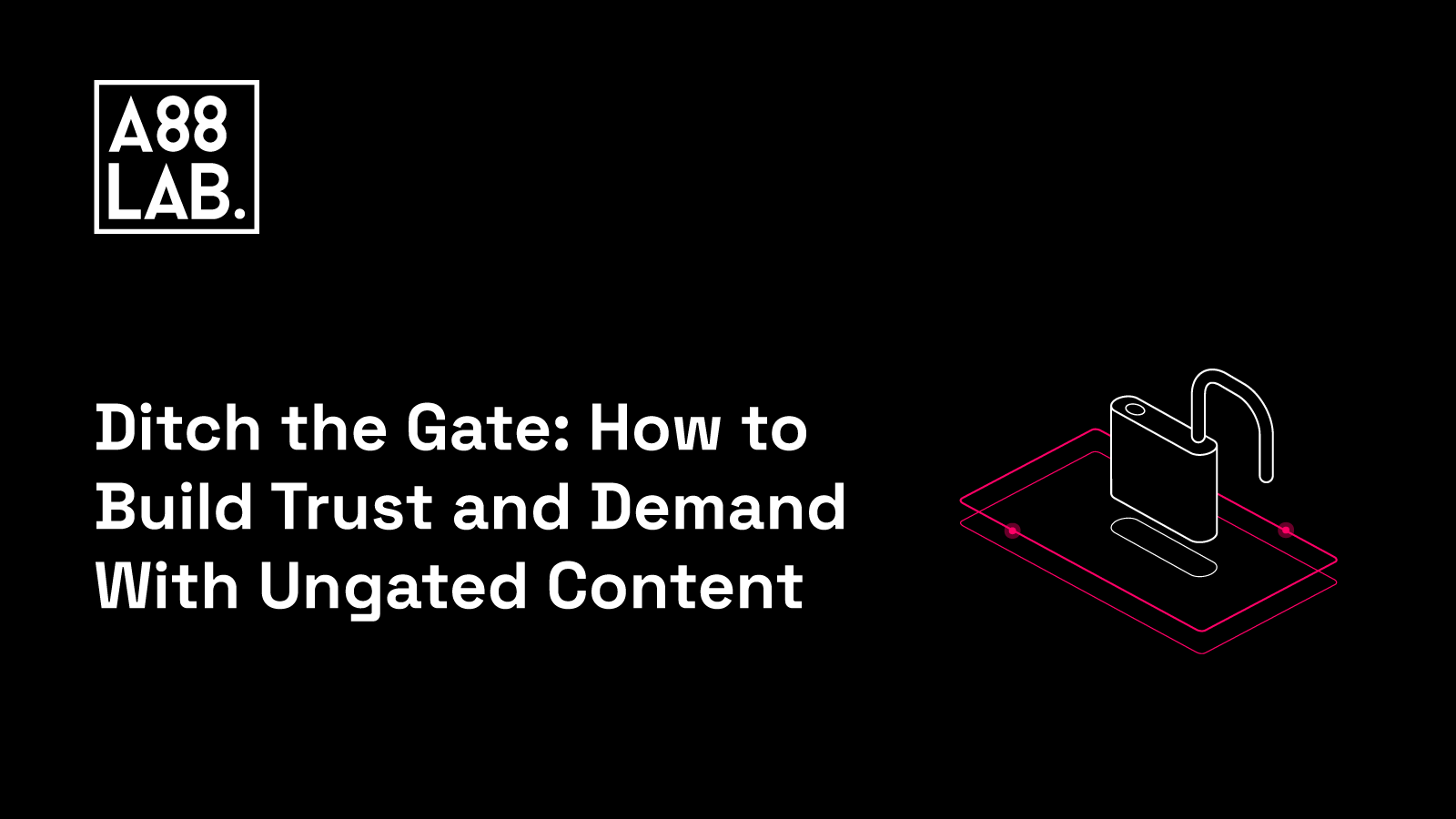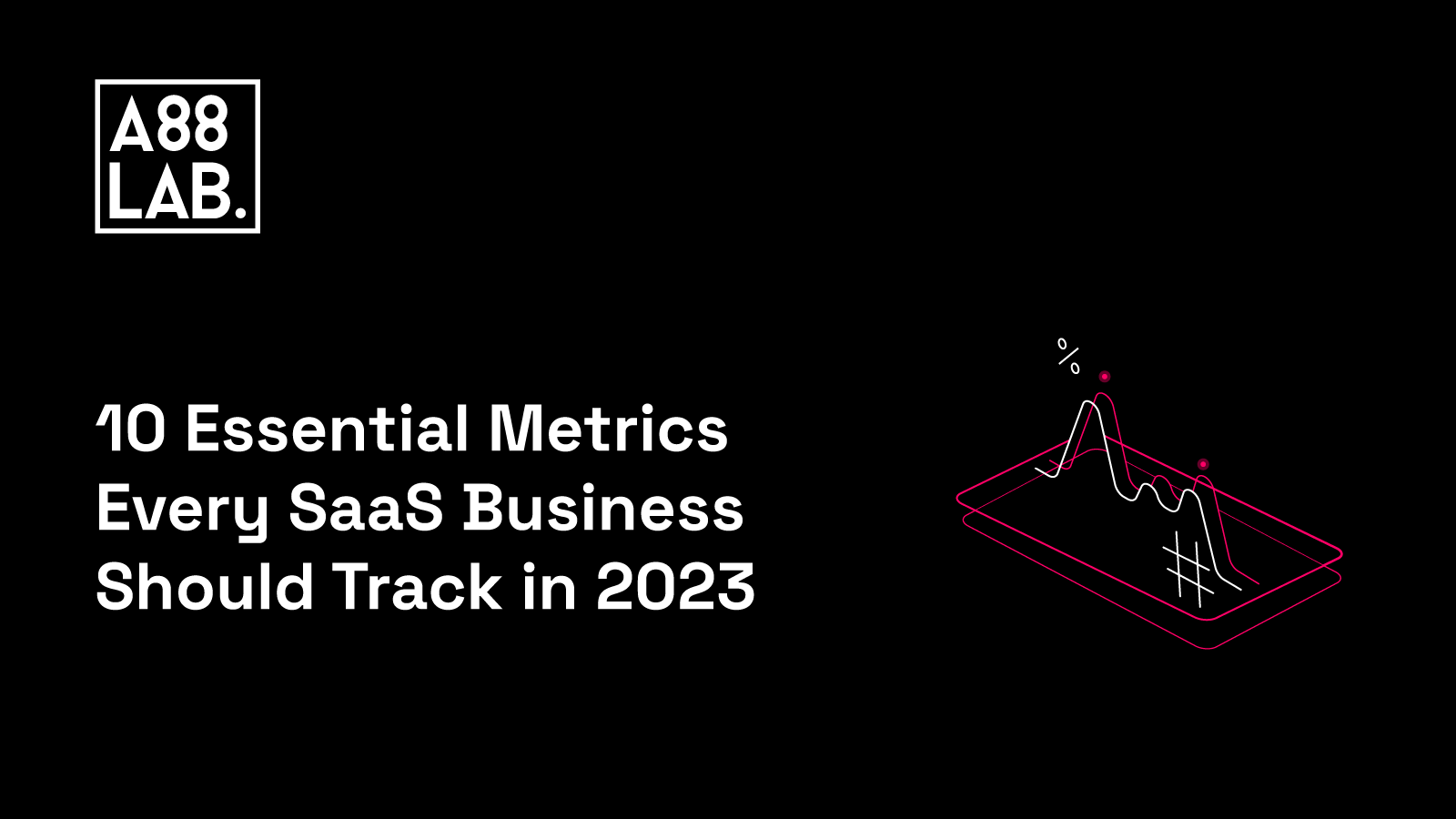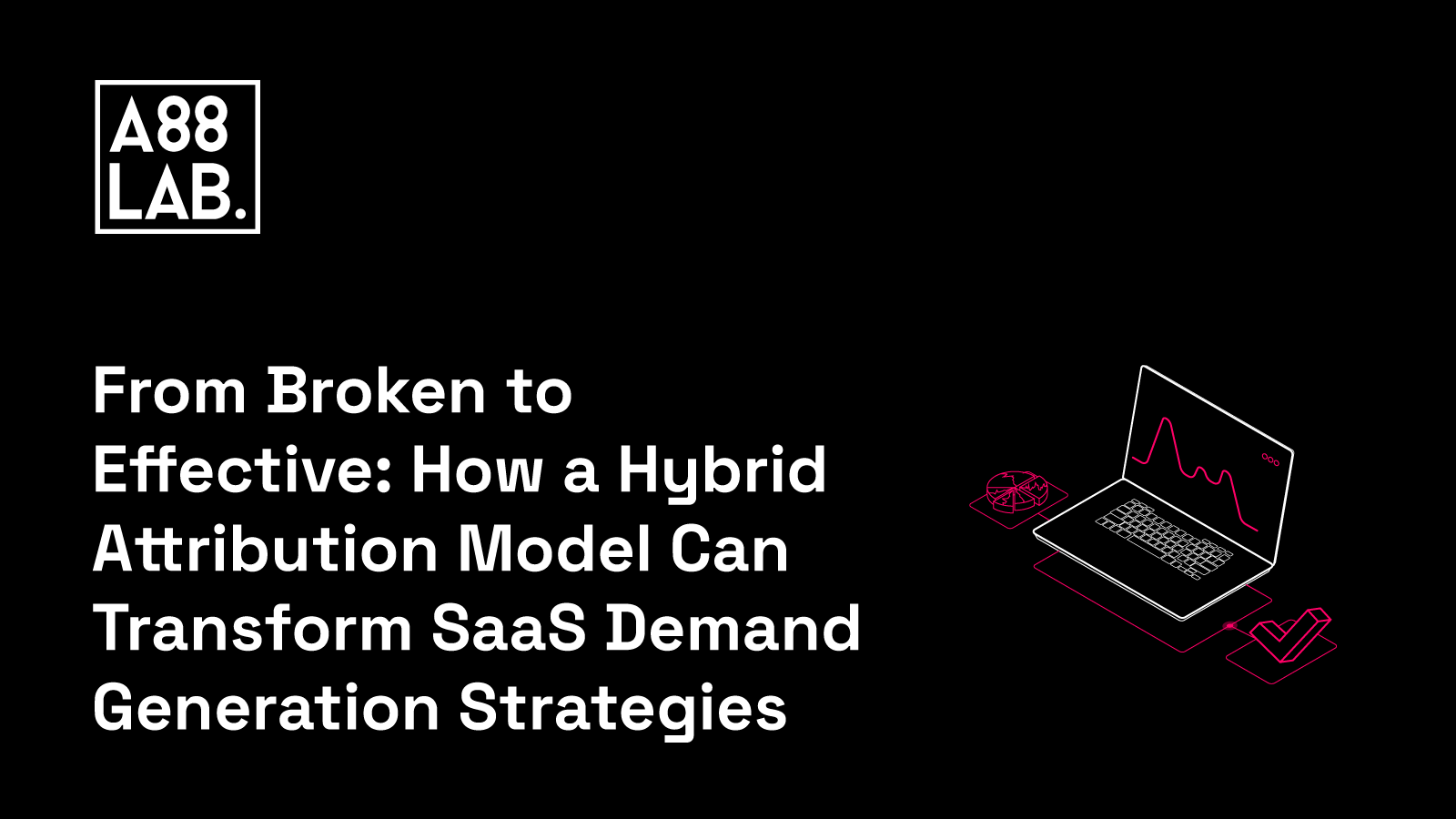As SaaS marketers, we're constantly on the hunt for the latest and greatest growth strategies. And for years, gated content has been a staple in that playbook. After all, who doesn't want more leads to feed into the top of their funnel? But the truth is, gated content doesn't work as well as we think it does, and it's time to start exploring other options.
When it comes to SaaS demand generation, the primary focus is on creating interest and desire for your product or service. While gated content can certainly be a lead generation tool, it is not the most effective way to drive demand.
The internet is filled with ebooks, checklists, and other content hidden behind a form fill. B2B SaaS buyers have grown tired of shelling out their private information only to be bombarded with sales calls and spammy email pitches, or worse, to discover that the content they requested doesn't really answer their questions or solve their problems.
In fact, discovering that your "leads" often hide behind email addresses such as 123@123.com and generic job titles like "business owner" is a tell-tale sign that your gated content isn't actually providing much value. Not to mention, it undermines the credibility of your marketing team. It's hard to justify the effectiveness of a campaign when a significant number of the leads it generates turn out to be fake.
Furthermore, the leads generated through gated content often fail to convert into paying customers, or if they do, the sales cycle is typically much longer than expected. The reason for this is simple: these leads are often not yet ready to make a purchase when they download a piece of gated content.
So if gated content isn't the answer, then what is? The answer lies in creating content that's valuable enough to promote without a gate. Content that provides real, tangible value to your target audience and encourages them to take the next step in their buying journey when they feel ready to do so, without exchanging their personal info for it.
In this article, we'll discuss why it’s time to move away from the old, broken playbook for lead generation that relies heavily on gated content. Instead, SaaS companies should focus on a demand generation approach that emphasizes ungating content to better reach and engage with potential customers.
The Problem With Gates
First and foremost, gated content tends to turn off potential buyers. For example, let's say you're searching for an answer to a specific question and come across an article that promises to provide the solution. You click on it, only to be presented with a form requiring you to hand over your contact information before you can even read the content.
Chances are, unless this article is something truly unique and irreplaceable, you'll just move on to another site. After all, why should you give up your personal information for content that's likely available elsewhere?
The problem is, when buyers are presented with a gate, they often feel like they're being pushed into something before they're ready. This can be especially true if it's their first time discovering your company and they don't yet have an idea of what you offer or how it might help them. Not to mention, with so many companies creating content, and many of them doing it without much attention to detail or quality, buyers approach conversion forms with a healthy dose of skepticism.
In addition, gated content limits the reach of your marketing efforts. Sure, you may be able to generate a few leads this way, but think about all the people who see your article and decide not to fill out the form. These buyers would have been a great audience to target with additional content, but now they're lost forever.
And, of course, there's the issue of fake leads. As mentioned earlier, gated content can often fill your SaaS sales funnel with leads looking for freebies that are not ready to buy or have no real intention of becoming a customer. These “leads” not only take away from your conversion rates but also waste time and resources that could have been put to better use.
They can create a false sense of success as you end up measuring vanity metrics such as visitors, leads, MQLs, and conversion rates. However, these metrics do not necessarily translate to actual revenue generated by your marketing efforts. In other words, gated content may give the appearance of progress, but it can actually hinder your ability to drive real business growth.
Does that mean gated content has no place in SaaS demand generation? Not necessarily. There are certain situations in which gated content may be the best solution.
When You Should Consider Gating Content
Even if your SaaS company primarily focuses on demand generation strategies, there are certain cases when it not only makes sense to gate your content, but the buyers will happily fill out the form and provide their (real) contact information.
If your content offers something truly unique and valuable, such as a highly detailed case study, exclusive data you can't get elsewhere, or original research with insights highly beneficial to your target audience, then gating it may not be a bad option. This is especially true if you plan on providing additional content, such as more in-depth studies or follow-up case studies, that can only be accessed by people who have already filled out the form.
What if you already have pieces of gated content that are performing well? Let your conversion rates be your guide. If conversion rates are high and you feel like you're getting quality leads, keep gating the content. If your landing page conversions are low and your gated content turns into a bottleneck, your best bet is to move away from the gates and look for alternative options.
Why Gated Content Shouldn’t Be a Part of Your Demand Generation Strategy
Let's start by explaining the core concept behind effective demand generation. Demand generation is all about getting your expertise, knowledge, and SaaS product in front of the right people and convincing them to become customers. And, unlike traditional marketing tactics focusing on casting a wide net and hoping for the best, demand generation is a much more targeted approach.
It is a sophisticated process that begins before a person enters the purchase cycle and continues until they become a customer. The goal is to build relationships, trust, and credibility while providing value along the way.
Demand generation for B2B SaaS companies involves a strategic approach and various marketing and sales tactics like content marketing, social media advertising, ABM, email campaigns, webinars, podcasts, thought leadership, and more. The prime goal of SaaS demand generation is not to capture leads but to establish a brand as a market leader in front of the SaaS audience, build relationships, and eventually create new customers.
Gated content, as you may have guessed by now, is not a good fit for this approach. When it comes to demand generation, gated content falls flat on two key points: providing value and building relationships.
First off, gating your content limits its reach and reduces its effectiveness as a tool for driving leads and customers. It limits the number of people who can access your content, meaning it's not actually providing any real value to your potential customers. With gated content, you're essentially sacrificing quality for quantity (more leads over more high-quality opportunities). By gating the content, people won't be able to get and consume the information they need unless they fill out a form.
Secondly, gated content does not generate relationships. For demand generation, relationships are key. You need to be able to build trust with your potential customers, and that requires a level of engagement that gated content simply doesn't provide. The people who access your content might fill out a form, but they won't have any reason to stick around or come back for more if all they get is locked away behind a form.
Content and the Buyer’s Journey
To understand why gated content doesn't work for B2B SaaS demand generation, it's important to take into consideration the buyer's journey. The buyer's journey consists of three stages: awareness, consideration, and decision.
In the awareness stage, potential customers are in the process of understanding their problem or challenge. They are researching and looking for content that sheds light on the issue they're facing. B2B SaaS companies should focus on providing helpful, educational content during this stage without asking for anything in return. This could include blog posts, videos, podcasts, eBooks, webinars, free tools - anything that can help potential customers learn more and make an informed decision.
At the consideration stage, prospects are weighing their options and doing their research on different SaaS products that could solve their problem. During this stage, B2B SaaS companies should provide more detailed content like case studies and product demos to demonstrate how their product is the best fit for the customer’s needs. This is also a great opportunity to start building relationships and trust by engaging prospects through emails, webinars, and social media.
By the decision stage, prospects should have gathered enough information to make an informed purchase decision. In this stage, B2B SaaS companies should focus on providing a seamless experience throughout the complex buying process. This could include guiding prospects to product pages, comparison pages, and custom demos, as well as providing support during the evaluation and negotiation phases. Offering incentives, such as extended trials or discounts, can also help encourage prospects to become customers.
Here is a thing: No matter which stage of the buyer’s journey your prospects are in, buyers will most likely find gated content annoying. Furthermore, it can be a huge barrier for them to make an informed purchase decision. Gated content limits the amount of information they can access and prevents them from building relationships with potential customers. Not to mention, without links and engagement, gated content loses a lot of SEO benefits, such as organic search visibility, site traffic, more indexed content, lower bounce rates, and higher rankings.
Why Are Marketers Still Relying on Gated Content
Despite the fact that gated content has limited effectiveness, many marketers still rely on it as a part of their SaaS content strategy. There are a few reasons why this is the case.
One is the fear of losing track of key metrics. Lead generation strategies rely heavily on collecting user information through lead forms, which makes it easy to track the effectiveness of your campaigns. With gated content, marketers can easily keep track of who is viewing their content and what actions they’re taking.
With demand generation, however, it can be more challenging to measure the success of your content without those lead forms. The challenge for many marketers is finding a way to track the impact of their content without relying on gated content.
Another reason is the perception that buyers won’t engage with your content unless there’s a clear incentive for them to do so. Marketers may think that gating their content and requiring users to fill out a form creates an incentive for buyers to take action.
Unfortunately, this is not always the case. If buyers don’t feel like they are getting any value out of your content, they won’t be incentivized to take action, even if there’s a lead form involved. In reality, buyers are more likely to engage with your content if it’s informative and helpful.
Finally, some marketers may simply be relying on gated content because it is easy and familiar. Gating content is often seen as a minimal effort and an easy solution. However, if you want to see real results with your demand generation efforts, it’s important to invest in creating high-quality content that offers actual value to buyers.
Conclusion
At the end of the day, gated content may help capture leads, but it won't do much to generate demand. As such, it shouldn't be a part of your SaaS demand generation strategy. Instead, focus on creating high-quality, actionable content and make it available to everyone - without asking them to submit their personal information first. This will not only help you reach more people but also give them the information they need to make an informed decision and build relationships.
If you're looking to generate more demand for your SaaS product, focus on creating content that provides real value and is easy to access. Invest in producing educational and helpful content accessible to everyone throughout the buyer's journey - from awareness to decision. By doing this, you'll be able to generate more demand and build relationships with potential customers.
.png)


